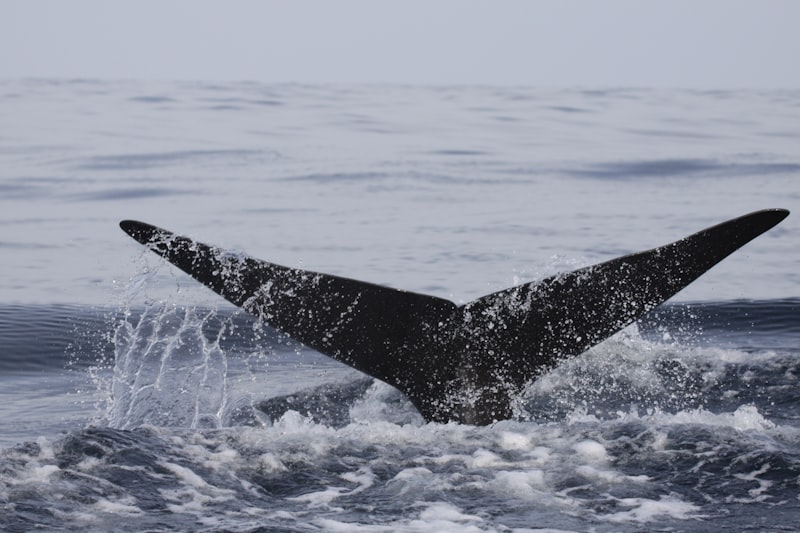At its core, coral bleaching is a stress response. When corals experience changes in their environment such as increased water temperatures, pollution, or changes in light, they expel the symbiotic algae called zooxanthellae living within their tissues. These algae give corals their vibrant colors and provide them with energy through photosynthesis. However, under stress, corals expel these algae, causing them to turn pale or white — hence the term “bleaching.”
Molecular ecology studies the genetic and molecular processes that underpin these interactions between corals and zooxanthellae. It explores how environmental stressors trigger genetic responses in both organisms, influencing their survival and the resilience of coral reefs. Scientists analyze the expression of genes involved in stress responses, photosynthesis, and immune function to understand how corals cope with changing conditions.
Imagine coral reefs as bustling cities, each coral polyp like a tiny apartment hosting millions of algae tenants. When the environment changes, it’s akin to a city-wide blackout or a sudden spike in pollution. Residents (corals) and businesses (zooxanthellae) struggle to adapt, and some may be forced to evacuate. Molecular ecology helps us decipher the complex relationships between these tenants and their landlords, revealing strategies for conservation and restoration.

By studying molecular ecology, scientists aim to unlock nature’s resilience mechanisms and find ways to mitigate coral bleaching. Understanding how genes and proteins respond to stress can guide conservation efforts, such as identifying heat-tolerant coral species or developing strategies to reduce local stressors like pollution.
Unraveling the Genetic Mysteries Behind Coral Bleaching
Imagine coral polyps as tiny architects, building intricate calcium carbonate homes that house algae called zooxanthellae. These algae are crucial for coral survival, providing them with food and vibrant colors through photosynthesis. However, when corals experience stress—be it from rising sea temperatures, pollution, or changes in water chemistry—the relationship between coral and zooxanthellae becomes strained.
Here’s where genetics comes into play. Recent studies have highlighted specific genes within corals that regulate their response to stress. These genes act like biological switches, controlling processes that either protect the coral or lead to its demise. Think of these genes as guardians—some trigger responses that help corals adapt to changing conditions, while others, under severe stress, initiate the expulsion of zooxanthellae, resulting in coral bleaching.
The complexity deepens when considering how different coral species respond uniquely to stressors. For instance, certain species may possess genetic variations that make them more resilient to heat stress, akin to how some humans are more tolerant to extreme temperatures than others. Scientists are studying these genetic variances to understand why some coral reefs bleach more severely than others, even when exposed to similar environmental pressures.
Unlocking these genetic mysteries holds the key to preserving coral reefs in a warming world. By identifying resilient coral species and understanding the genetic traits that make them so, researchers can inform conservation efforts and even explore innovative solutions, such as assisted evolution or selective breeding of heat-tolerant corals.
DNA Insights: How Molecular Ecology Guides Coral Conservation
Imagine coral reefs as bustling cities, each with a unique population of residents. Molecular ecology acts like a census, delving deep into the DNA of corals to identify different species and their genetic diversity. It’s like uncovering a hidden treasure map within the corals’ genetic code, revealing how they adapt to environmental changes and interact with their surroundings.
At its core, molecular ecology helps conservationists track the health of coral populations. By studying DNA variations, scientists can pinpoint which coral species are thriving and which are vulnerable. It’s akin to understanding a community’s resilience to challenges—some corals may have genetic traits that make them more resistant to rising sea temperatures or pollution.
Moreover, molecular tools enable researchers to trace the movements of coral larvae across vast ocean distances. It’s like following tiny boats equipped with GPS trackers in a vast sea, uncovering how coral populations connect and exchange genetic material between distant reefs. This knowledge is crucial for designing effective marine protected areas and restoration efforts that maximize genetic diversity.
Picture this: a coral reef as a mosaic of interconnected genetic patterns, each telling a story of adaptation and survival. Molecular ecology allows scientists to decode these patterns, providing insights that are essential for targeted conservation strategies. It’s akin to unraveling the threads of a tapestry, revealing the intricate beauty and resilience of coral ecosystems.
In essence, molecular ecology serves as a guiding compass for coral conservation efforts worldwide. By understanding the genetic blueprints of corals, we can better protect these fragile ecosystems for future generations to marvel at.
Genetic Resilience: Adapting Coral Reefs to Climate Change
Imagine coral reefs as vibrant underwater cities, bustling with life and color. These ecosystems are not just beautiful—they are vital to marine biodiversity and human livelihoods. Yet, rising ocean temperatures and pollution have pushed many coral species to the brink of extinction. That’s where genetic resilience comes into play.
At its core, genetic resilience refers to the ability of corals to adapt and survive in changing environmental conditions. It’s like nature’s own toolkit for evolution, allowing corals to develop traits that help them withstand stressors like heat and acidity. This adaptation isn’t instantaneous; it happens over generations as corals with beneficial traits pass them down to their offspring.
Scientists are studying resilient coral populations around the world to understand what makes them unique. By identifying these resilient traits, researchers hope to assist vulnerable coral reefs in adapting to our changing climate. It’s a race against time, but one filled with promise.

Picture a coral reef as a vast library of genetic information. Each coral species holds a unique genetic code, like books on a shelf. When conditions change, some books become more valuable than others. These valuable books—the resilient genes—hold the key to the reef’s survival.
In the Caribbean, for instance, researchers have identified certain coral species that seem more tolerant to heat stress. These corals could serve as a blueprint for breeding programs aimed at enhancing reef resilience. By cultivating these resilient strains, scientists aim to bolster the natural defenses of coral reefs worldwide.
Ultimately, genetic resilience offers a beacon of hope amidst the challenges facing coral reefs. It’s a reminder that nature, given the chance, can adapt and thrive—even in the face of adversity. As researchers continue their work, unlocking the secrets of genetic resilience, there’s optimism that coral reefs can weather the storm of climate change and continue to dazzle us with their beauty and biodiversity.
Inside the Coral Microbiome: Key Players in Bleaching Events
When we think of coral reefs, we often picture vibrant underwater gardens teeming with life. However, beneath this colorful façade lies a delicate balance that is crucial to their survival – the coral microbiome. This intricate community of microorganisms plays a pivotal role in maintaining the health and resilience of coral reefs, yet it is also deeply impacted by environmental stressors, such as bleaching events.
So, what exactly is the coral microbiome? Imagine it as a bustling city within the coral, where bacteria, archaea, fungi, and viruses coexist in a complex web of interactions. These microorganisms not only aid in nutrient cycling and waste removal but also protect the coral from pathogens and help it adapt to changing conditions.
In times of stress, such as increased sea temperatures or pollution, this once harmonious community can falter. Bleaching events, where corals expel their colorful symbiotic algae (zooxanthellae), often lead to widespread coral mortality. However, recent research has shed light on the role of the microbiome in these events.
Researchers have identified key players within the coral microbiome that influence how corals respond to stress. For instance, certain bacteria can produce compounds that protect the coral from heat stress or help it recover faster from bleaching. These beneficial microorganisms act almost like guardians, standing ready to defend their coral hosts against environmental assaults.
Moreover, the composition of the coral microbiome can vary greatly between coral species and geographic locations. Just as different cities have unique cultures and customs, corals in the Caribbean may harbor different microbial communities compared to those in the Great Barrier Reef. This diversity highlights the resilience of corals – their ability to adapt to local conditions through their microbial partnerships.
Understanding the dynamics of the coral microbiome is crucial for conservation efforts aimed at protecting these invaluable ecosystems. By studying how microorganisms interact with corals during bleaching events, scientists can develop strategies to mitigate the impacts of climate change and other stressors.
As we delve deeper into the intricate world of coral reefs, one thing becomes clear: the tiny inhabitants of the coral microbiome play a monumental role in the survival of these underwater wonders. Their story is one of resilience, adaptation, and the ongoing struggle to maintain balance in an ever-changing environment.
Frequently Asked Questions
How can molecular techniques aid in coral reef conservation?
Learn how molecular techniques contribute to coral reef conservation efforts by enabling precise identification of coral species, assessing genetic diversity, and monitoring coral health and resilience to environmental stressors.
Can genetic diversity help corals adapt to bleaching events?
This FAQ explores how genetic diversity can aid corals in adapting to bleaching events. It discusses the role of genetic variation in enhancing resilience to environmental stressors like temperature changes, highlighting how diverse gene pools can support coral survival and adaptation strategies.
What role do genes play in coral bleaching?
Learn about the critical role genes play in coral bleaching, affecting resilience to environmental stressors. Understand how genetic diversity can influence coral survival and adaptation, key factors in conservation efforts.
What are the key molecular indicators of coral stress?
Discover the key molecular indicators that signify stress in coral. Learn about the specific genetic and protein markers that researchers use to assess coral health under environmental pressures.
How does climate change impact coral genetics?
This FAQ provides a concise overview of how climate change affects coral genetics. It explains the direct and indirect impacts of rising ocean temperatures, acidity levels, and extreme weather events on coral reefs. The answer highlights the genetic diversity loss, reduced resilience, and potential adaptation challenges faced by corals due to these environmental changes.


